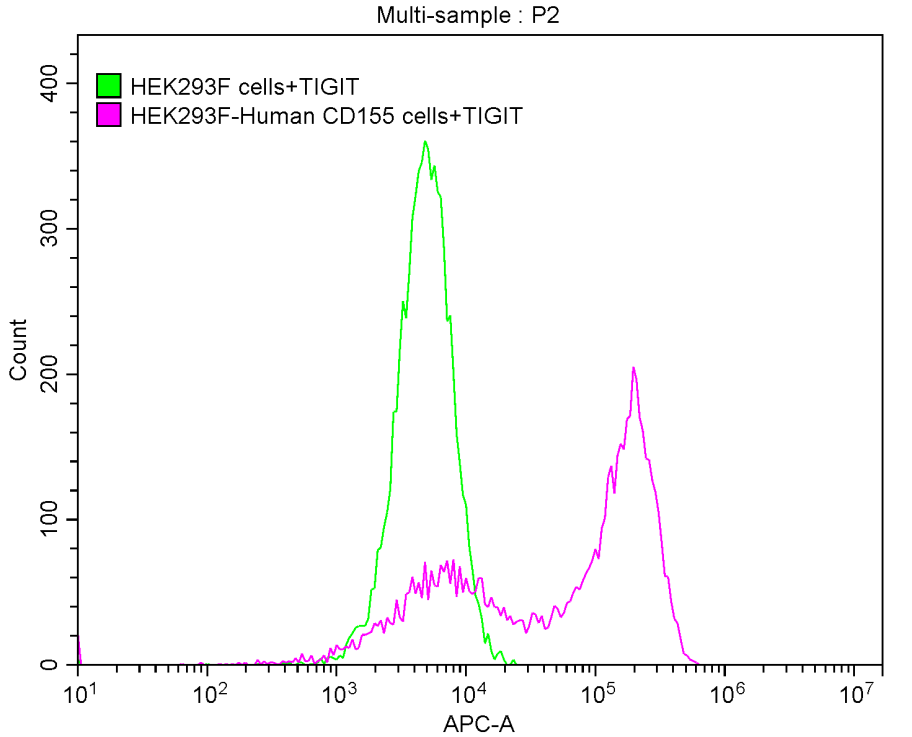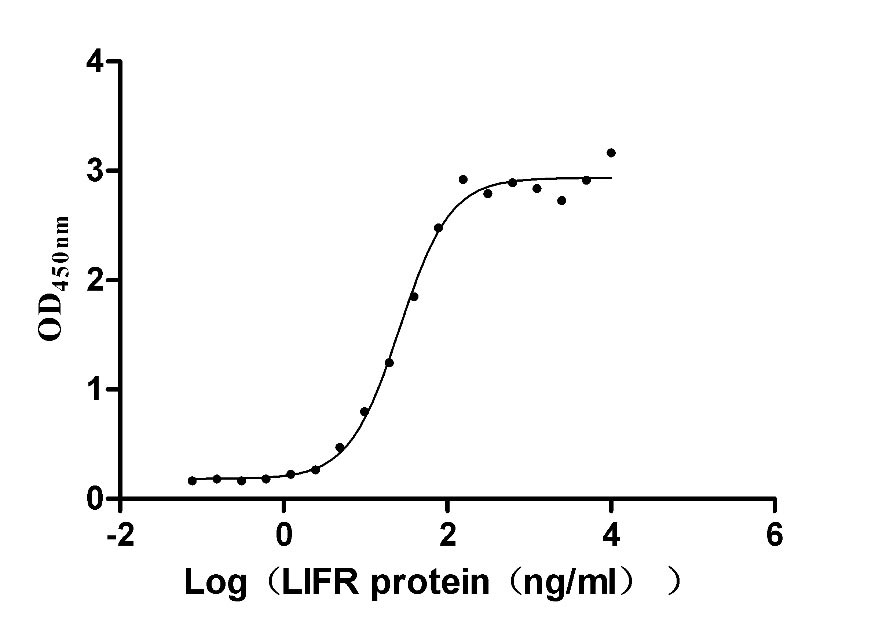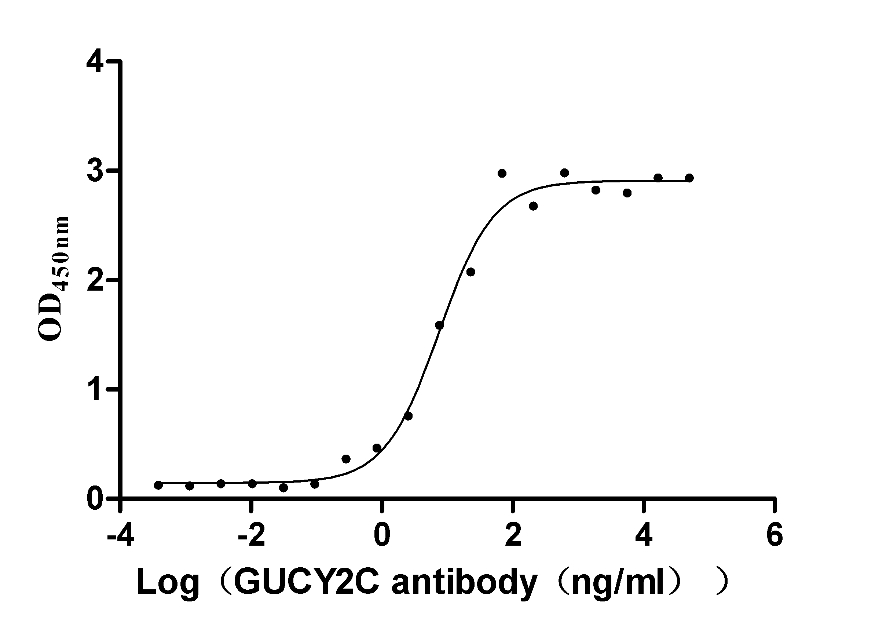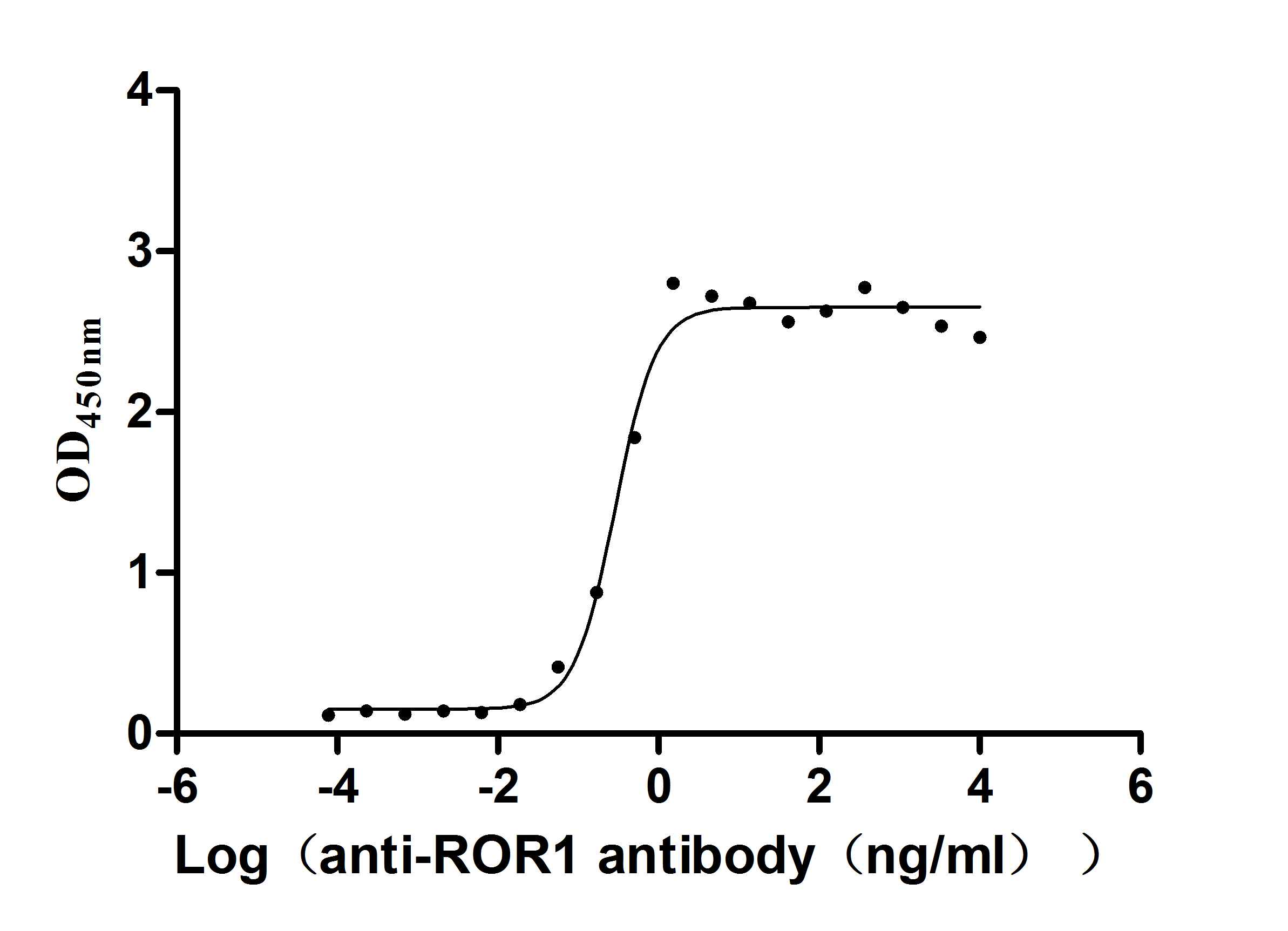Recombinant Human N6-adenosine-methyltransferase catalytic subunit (METTL3)
-
中文名称:人METTL3重组蛋白
-
货号:CSB-YP773027HU
-
规格:
-
来源:Yeast
-
其他:
-
中文名称:人METTL3重组蛋白
-
货号:CSB-EP773027HU-B
-
规格:
-
来源:E.coli
-
共轭:Avi-tag Biotinylated
E. coli biotin ligase (BirA) is highly specific in covalently attaching biotin to the 15 amino acid AviTag peptide. This recombinant protein was biotinylated in vivo by AviTag-BirA technology, which method is BriA catalyzes amide linkage between the biotin and the specific lysine of the AviTag.
-
其他:
-
中文名称:人METTL3重组蛋白
-
货号:CSB-BP773027HU
-
规格:
-
来源:Baculovirus
-
其他:
-
中文名称:人METTL3重组蛋白
-
货号:CSB-MP773027HU
-
规格:
-
来源:Mammalian cell
-
其他:
产品详情
-
纯度:>85% (SDS-PAGE)
-
基因名:
-
Uniprot No.:
-
别名:adoMet-binding subunit of the human mRNA (N6-adenosine)-methyltransferase; IME4; M6A; Methyltransferase like protein 3; Methyltransferase-like protein 3; METTL3; mRNA (2'-O-methyladenosine-N(6)-)-methyltransferase; mRNA m(6)A methyltransferase; MT-A70; MTA70; MTA70_HUMAN; N6 adenosine methyltransferase 70 kDa subunit; N6-adenosine-methyltransferase 70 kDa subunit
-
种属:Homo sapiens (Human)
-
蛋白长度:Full Length of Mature Protein
-
表达区域:2-580
-
氨基酸序列SDTWSSIQA HKKQLDSLRE RLQRRRKQDS GHLDLRNPEA ALSPTFRSDS PVPTAPTSGG PKPSTASAVP ELATDPELEK KLLHHLSDLA LTLPTDAVSI CLAISTPDAP ATQDGVESLL QKFAAQELIE VKRGLLQDDA HPTLVTYADH SKLSAMMGAV AEKKGPGEVA GTVTGQKRRA EQDSTTVAAF ASSLVSGLNS SASEPAKEPA KKSRKHAASD VDLEIESLLN QQSTKEQQSK KVSQEILELL NTTTAKEQSI VEKFRSRGRA QVQEFCDYGT KEECMKASDA DRPCRKLHFR RIINKHTDES LGDCSFLNTC FHMDTCKYVH YEIDACMDSE APGSKDHTPS QELALTQSVG GDSSADRLFP PQWICCDIRY LDVSILGKFA VVMADPPWDI HMELPYGTLT DDEMRRLNIP VLQDDGFLFL WVTGRAMELG RECLNLWGYE RVDEIIWVKT NQLQRIIRTG RTGHWLNHGK EHCLVGVKGN PQGFNQGLDC DVIVAEVRST SHKPDEIYGM IERLSPGTRK IELFGRPHNV QPNWITLGNQ LDGIHLLDPD VVARFKQRYP DGIISKPKNL
-
蛋白标签:Tag type will be determined during the manufacturing process.
The tag type will be determined during production process. If you have specified tag type, please tell us and we will develop the specified tag preferentially. -
产品提供形式:Lyophilized powder
Note: We will preferentially ship the format that we have in stock, however, if you have any special requirement for the format, please remark your requirement when placing the order, we will prepare according to your demand. -
复溶:We recommend that this vial be briefly centrifuged prior to opening to bring the contents to the bottom. Please reconstitute protein in deionized sterile water to a concentration of 0.1-1.0 mg/mL.We recommend to add 5-50% of glycerol (final concentration) and aliquot for long-term storage at -20℃/-80℃. Our default final concentration of glycerol is 50%. Customers could use it as reference.
-
储存条件:Store at -20°C/-80°C upon receipt, aliquoting is necessary for mutiple use. Avoid repeated freeze-thaw cycles.
-
保质期:The shelf life is related to many factors, storage state, buffer ingredients, storage temperature and the stability of the protein itself.
Generally, the shelf life of liquid form is 6 months at -20°C/-80°C. The shelf life of lyophilized form is 12 months at -20°C/-80°C. -
货期:Delivery time may differ from different purchasing way or location, please kindly consult your local distributors for specific delivery time.Note: All of our proteins are default shipped with normal blue ice packs, if you request to ship with dry ice, please communicate with us in advance and extra fees will be charged.
-
注意事项:Repeated freezing and thawing is not recommended. Store working aliquots at 4°C for up to one week.
-
Datasheet :Please contact us to get it.
相关产品
靶点详情
-
功能:The METTL3-METTL14 heterodimer forms a N6-methyltransferase complex that methylates adenosine residues at the N(6) position of some RNAs and regulates various processes such as the circadian clock, differentiation of embryonic and hematopoietic stem cells, cortical neurogenesis, response to DNA damage, differentiation of T-cells and primary miRNA processing. In the heterodimer formed with METTL14, METTL3 constitutes the catalytic core. N6-methyladenosine (m6A), which takes place at the 5'-[AG]GAC-3' consensus sites of some mRNAs, plays a role in...显示更多
-
基因功能参考文献:
- Findings suggest that METTL3 plays very important oncogenic roles in ovarian carcinoma development and/or aggressiveness by stimulating AXL translation and EMT. PMID: 30249526
- Data show that hepatitis B X-interacting protein (HBXIP) modulated Methyltransferase-like 3 (METTL3) by inhibiting miRNA let-7g, which down-regulated the expression of METTL3 by targeting its 3'UTR. PMID: 29174803
- Study reports the importance of m6A modification in glioma stem-like cells and uncovers METTL3 as a potential molecular target in glioblastoma therapy. PMID: 28991227
- The role of METTL3 in pancreatic cancer cells drug resistance and radiation resistance.METTL3 was associated with mitogen-activated protein kinase cascades, ubiquitin-dependent process and RNA splicing and regulation of cellular process. PMID: 29345285
- METTL3 is soluble and inactive while the catalytic center of METTL14 is degenerated and thus also inactive. In addition, the C-terminal RGG repeats of METTL14 are required for METTL3/14 activity by contributing to RNA substrate binding. PMID: 29348140
- data define METTL3 as a regulator of a chromatin-based pathway that is necessary for maintenance of the leukaemic state and identify this enzyme as a potential therapeutic target for acute myeloid leukaemia PMID: 29186125
- loss of METTL3 leads to increased levels of phosphorylated AKT, which contributes to the differentiation-promoting effects of METTL3 depletion. Overall, these results provide a rationale for the therapeutic targeting of METTL3 in myeloid leukemia PMID: 28920958
- The structure reveals the heterodimeric architecture of the complex and donor substrate binding by METTL3. Structure-guided mutagenesis indicates that METTL3 is the catalytic subunit of the complex, whereas METTL14 has a degenerate active site and plays non-catalytic roles in maintaining complex integrity and substrate RNA binding. PMID: 27627798
- For the methylation of adenosine in RNA, Mettl3 is the catalytically active subunit, while Mettl14 plays a structural role critical for substrate recognition. PMID: 27373337
- METTL3 enhances mRNA translation through an interaction with the translation initiation machinery in lung adenocarcinoma cells. PMID: 27117702
- miR-33a can attenuatenon-small-cell lung carcinoma cells proliferation via targeting to the 3'-untranslated region of METTL3 mRNA. PMID: 27856248
- Structure of the METTL3-METTL14 complex PMID: 27281194
- genetic inactivation impaired embryonic stem cells differentiation PMID: 25456834
- Study identifies m(6)A methylation sites on many clock gene transcripts and shows that specific inhibition of m(6)A methylation by silencing of the m(6)A methylase Mettl3 is sufficient to elicit circadian period elongation and RNA processing delay. PMID: 24209618
收起更多
-
亚细胞定位:Nucleus. Nucleus speckle. Cytoplasm.
-
蛋白家族:MT-A70-like family
-
组织特异性:Widely expressed at low level. Expressed in spleen, thymus, prostate, testis, ovary, small intestine, colon and peripheral blood leukocytes.
-
数据库链接:
HGNC: 17563
OMIM: 612472
KEGG: hsa:56339
STRING: 9606.ENSP00000298717
UniGene: Hs.168799



















